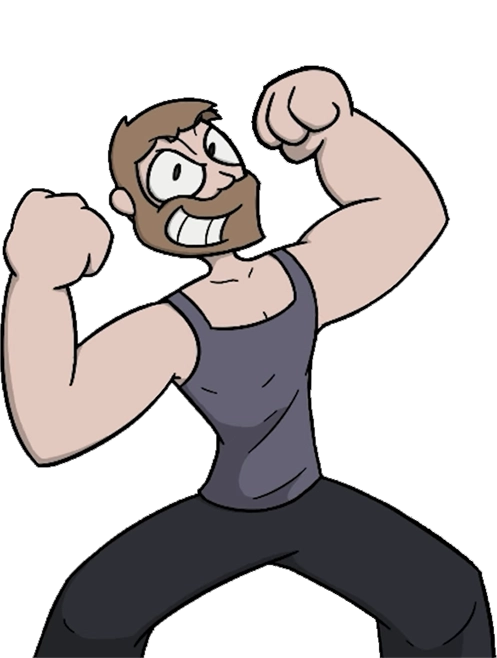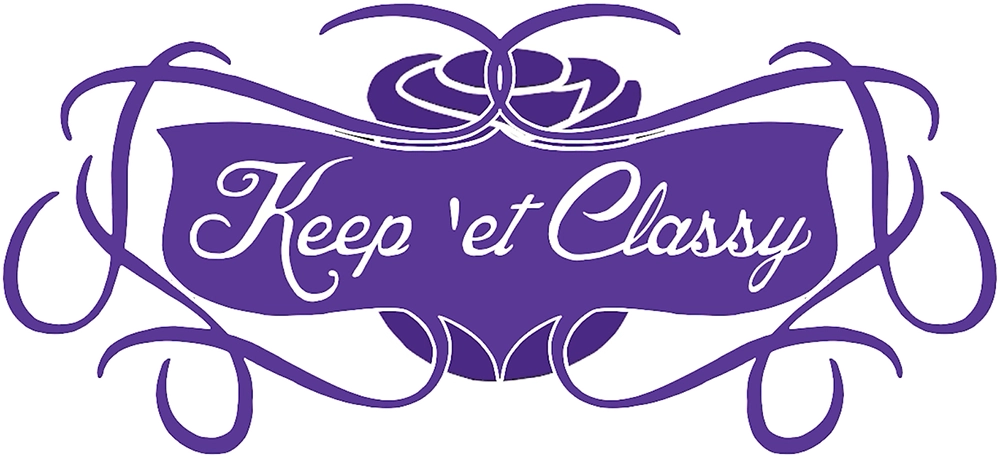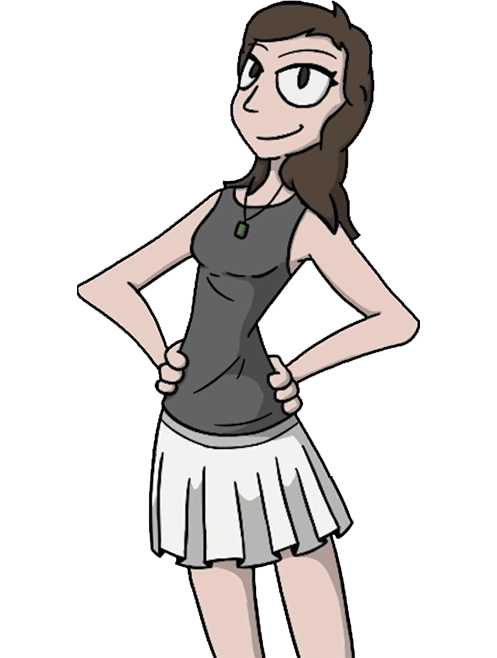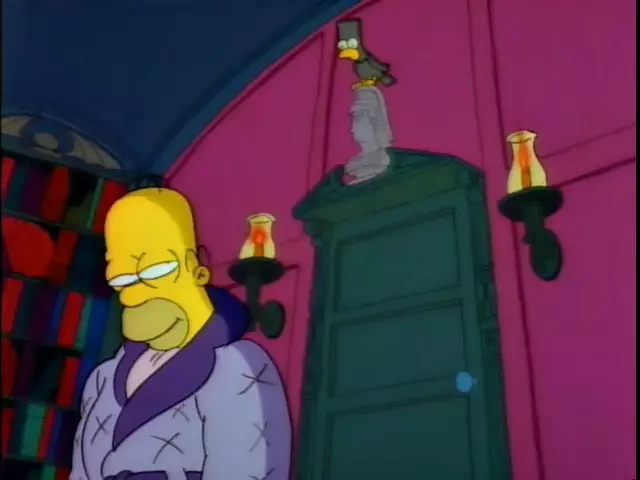My Recollection
Wow, this is like 3 episodes at once! My parents explaining the references to me. The Bart ravens marching around Homer’s head, chanting, “Nevermore”.
I saw my first set of strange old man testicles on Halloween 1999. There’s a certain confronting aspect to seeing old man testicles when you’re 16. One expects wrinkly, as one is, by this stage, very familiar with one’s own, but there’s a crepe paper like sub-layer of wrinkliness to old man testicles that give them the appearance of a delicately dehydrated rose petal.
We weren’t in costumes, exactly. We were stoned, scumbag teenagers wandering around Graceville on the off chance we could mooch some lollies. Halloween is now on the final stretch of being wholly adopted by Australia, but at the time nobody else was really doing it. We were high, bored, the internet had to be called on the phone, and so we left the house in the dumb hope something would happen.
Graceville was, and probably still is, a mix of the middle-class and retirees with just enough strange ferals thrown in to spice things up. This is something Australia does a bit, chuck a few lumps of Housing Commission in with the normals in the honestly positive desire to prevent the creation of ghettos like Goodna. This made the night a fucking dice roll as we could knock on the door of: a confused old person who’d either gently close the door in our face or give us a pear; a middle-class house with primary school aged kids who’d actually give us some Milky Ways and shit; and last but not least, weird shitcunts who’ll call us faggots, traitors, or jokingly threaten to molest us.
Two of my friends had actual masks, showbag leftovers, so they’d knock on the door while myself and another would linger further back. Milky Ways had made us confident, perhaps dangerously so, and what started as a quite timid exercise had grown into a near demand turned into a warped bark by the discount plastic skull wrapped awkwardly around my friend’s colossal combination of hair and noggin.
“TRRAAWK AWR TRREEEEETCH”, he bellowed at a door.
The door was haphazardly affixed to a high set house and we were uncomfortably arranged on the slightly too steep and slightly too narrow staircase that lead directly to it. Their under the house bit wasn’t sealed in, this was a warning. This old guy opens it up and is weirdly happy to see us so it took us a minute to realize his balls were out and about level with with Skull Kid. The thing about thinking you can see balls is that your brain will go out of its way to see them as anything but balls because balls are, at the very least, an awkward situation.
They didn’t flop right. For a while I was certain they were the front bit of your pyjama/boxers that had bunched up in an odd way, but nobody makes boxers with that unmistakable meatiness to them. We were looking at balls. Was he crazy? He sounded alright. Was he a feral? His house didn’t smell like sour milk and curry powder. There were no easy answers and, like Final Jeopardy, even harder questions.
He didn’t acknowledge the balls. We didn’t acknowledge the balls. He gave us some Le Snacks which aren’t candy but also aren’t bad when you’re high but also aren’t worth balls. We called it a night.
The Episode.
Like when mum accidentally measured your height with the permanent nikko, Treehouse of Horror is an important and obvious maturation marker for the series. The Simpsons, both show and family, are now enough themselves that they can afford jaunts into the blatantly intertextual and wildly non-canon. Although, this is not done without some audience guiding framing devices. Speaking of which, this episode has two. The first is Marge’s cold open warning to the audience about the scary nature of the episode. This is a reference to Edward Van Sloan’s similar warning from the 1931 Frankenstein that takes on an unusual reality level here.
Marge doesn’t exist, a fairly obvious statement but Marge’s animated nature means she doesn’t exist twice. Live actors in character and full makeup can assault your reality by existing in front of you, Johnny Depp’s visits to schools as Jack Sparrow are good examples of this. This is not something voice actors can really do except in the unlikely scenario that the animated character is based on them and even then the animation/reality line is so fundamentally firm that one always has to actively suspend disbelief. But if it walks like a duck and quacks like a duck then oh my god that’s actually Jack Sparrow. Pro wrestlers are the best at beating this. A kid knows Jack Sparrow isn’t real, even if he’s right in front of them, but you can actually meet THE John Cena and it’s really him right there. But this can never happen with animation.
Animated Marge addresses the audience as Marge. Not as animated actress Dolores Meatskull who plays Marge and not as voice actress Julie Kavner via an animated Marge avatar. It’s a voice actress playing a character as that character but in a fashion where she is aware of the falseness of her own reality. Imagine meeting Jack Sparrow and instead of Johnny Depp capering around you get a shattered man broken by the realisation that his whole existence is simply a few glances from idiot gods. Marge maintains her sanity though, testament to just how durable a housewife can be.
This moment contrasts well with the show’s earlier, stupider direct address to the audience: Bart’s warnings re the horrors of war at the end of Bart the General. When using atypical grammar in creative writing, the general rules are be consistent and know why you are doing what you are doing. Consistently broken rules with a coherent purpose create stable alternative realities. Haphazard, meaningless rule breaking structures nothing and is indistinguishable from error. Audience acknowledgement from characters, particularly characters who aren’t playing at playing themselves as in later episodes like Behind the Laughter, is the atypical grammar of reality. Marge’s address to the audience breaks a rule for a reason (technically two) and that reason remained consistent even after it wasn’t really necessary anymore.
The first technical reason was that it was a legitimate warning to the letter writing imbeciles. I feel it necessary to address how silly that may sound considering the nature of our media HERE IN THE FUTURE, but yes, the whining imbeciles had a much tighter grip on things a mere two decades ago and the horrifying content of this episode would have been enough to set them off.
Second, it’s a big fat signal to the audience that the normal rules are not in effect. Most animated series share a similar, animation level of reality. Even shows like Invader Zim, which had serialised plot and character developments, operated within an animated realism that allowed characters to end one episode as sentient baloney and start the next episode without that being an issue for the narrative to resolve. The animated sitcom has a stronger tether to natural reality, flexible but not breakable like baloney Zim, so the more unreal the more the show has to cordon it off with framing devices. Marge’s intro, in all its reflexive glory, is a loud announcement that the following events are fictional within fictional. This is the “why” that validates Marge’s over Bart’s fourth wall break.
This overt warning to the audience is not the only reality structuring device the episode uses. Once the episode proper starts we are brought to the one and only eponymous Treehouse of Horror as Bart and Lisa trade the scary stories we see. This is an actual framing device, an in-universe reason for the presentation of an anthology of stories. These are another tool of reality construction that has found a home in the reality subversion efforts of many modern film and television works. A film, regardless of how realistically presented, is trapped in an inescapable structure of audience and viewed work. The existence of a shot or a printed word shines light on the authors, printers, set designers, caterers, and various other behind the scenes apparatus required to pull off a magic trick. This gave rise to the “found footage” method of subverting the need for even that fairly unconscious suspension of disbelief.
There’s been a trend in some modern sci-fi films of putting lens flare into space action sequences. At first, this seems as unnecessary as putting a secondary framing device into an animated sitcom but there’s a point to it. There’s a kind of arms race between creators and audiences forcing the former to get craftier as the latter get more aware. We know the space battle is largely or entirely computer generated, there is no lens of a camera to create the flare. By adding it, it triggers audience awareness of the reality behind cinema and suggests that this reality was at work above some distant planet where a teamster crew in space suits fussed over cables and camera placement in zero g. The audience awareness of the machinery of cinema magic is co-opted and a secondary level of unreality is given the trappings of a primary. Similarly, Bart and Lisa’s fake world is granted legitimacy through overt use of a narrative tool it could ignore (later seasons, with the acceptance of the Halloween tradition to stand on, eventually did).
Free from any consequences, the Halloween episodes become a toybox for the writers and this most obviously manifests in each being an overt parody or homage. Bad Dream House, Hungry are the Damned, and The Raven begin a tradition of the show spoiling 20-30 year old pop-culture by basically being The Amityville Horror, the Twilight Zone episode To Serve Man, and duh.
The Raven is the most obvious with Poe even being a credited writer for the episode. Narrated by James Earl Jones, the piece is more an animated performance of an edited down version of the poem with Homer, and Bart as the titular Raven, giving voice to their spoken lines around Earl’s unsurprisingly lovely reading. What makes this homage over parody is it’s more The Raven with Simpsons bits than it is The Simpsons with Raven bits. Like instead of a pizza with pepperoni on it it’s a giant pepperoni with bits of pizza dough on it and that gives me an idea, I’m going to be rich, see you fuckheads later.
There are only 12 additions, 3 are addressed interruptions by Bart, 4 are lines from Homer not in the poem but related directly to his actions presenting it, one is Lisa and Maggie’s cameo as censer wielding seraphim, and 4 are actual jokes. Two of those last 4 jokes scarcely stand out: Homer reading a book called “Forgotten Lore Vol. II” and references to Poe’s other famous tales as Bart’s Raven drops the books on Homer’s head. The painting of Marge as Lenore has an extra framed painting to complete her hair but it’s really the final one, a dizzy Homer seeing a Warner Bros style marching garland of ravens, that stands as the only real interjection into the poem.
This tone of respect for the original work is most visible in the piece’s highlight: Dan Castellaneta’s voice work. There’s an old thing about why Mel Blanc was such an amazing voice actor and it was because he was able to do his characters, like Bugs and Daffy, doing impressions of each other. Blanc could inhabit, not just multiple voices, but multiple characters at once, channelling one’s ideas of the other to inform his impressions. There’s a hint of this in how Castellaneta plays Homer here. There’s a passionate anger in the second last verse that is simultaneously so perfectly of the original poem and so perfect a piece of Homeric anger directed at Bart that even Castellaneta’s added grunts of frustration feel as though Poe wrote them himself.
Hungry are the Damned is a degree up on the reference-o-meter as it is a direct parody of a single work but with a few additions and twists. If you aren’t 50 or a dork who enjoys doing their research, this episode is based on To Serve Man, a Twilight Zone episode about super-intelligent black men from the future come to exact revenge on whitey by eating him.

Have you ever read a Goosebumps book? You know, those things for teens where there’s always a twist at the end that’s both so obvious yet so disconnected from the plot that the books have to be written around them like they were there before any of the rest of the book? If you answered yes, congratulations, that’s Twilight Zone. Hungry are the Damned is literally this but with a twist and by twist I mean straight.
In fighting games, there’s a strategy called a “mix up”. Basically, it means doing something unexpected to trick your opponent into defending incorrectly, e.g: you do an overhead (which hits ducking characters) then you do a low (which hits standing characters). This will ruin beginners but as you start to play against more experienced folk you need to get a bit cleverer. This is when you bust out the “no mixup mixup” or: doing exactly the same thing 8 times in a row because your opponent is expecting you to mix them up. It’s zigging after you’ve already zigged and nobody expects a zig-zig which you can tell because that’s not a term. Hungry are the Damned does this, it sets up the classic twist of (spoilers) To Serve Man, that they are eating people, and instead makes the cookbook an actual cookbook for making food for people instead, turning Lisa into the bad guy. Ha ha, classic mirth. Like the twist based media it’s parodying, there’s little in it aside from the obvious.
Bad Dream House is the prototypical Halloween story. It uses a direct source, The Amityville Horror, but one that sits within a broader sub-genre, haunted house, that allows for both an anchored plot to parody and a wide variety of other material to reference. The result lacks the legitimate dramatic punch of The Raven, the historical relevance of Hungry are the Damned, or any major talking points, but it more than makes up for it in being really goddamn funny. This is the toybox in all its glory.
The episode wraps up with Bart and Lisa both disappointed that none of their scary stories really hit the mark, while a terrified Homer trembles beneath them. I always found this odd as I’ve never been bothered by a story, I need a solid visual element to really get to me. Generally this manifests as the physical revulsion to body horror, which I love, but Eastern horror has gotten to me a few times with unusual peeking.

This gives me the willies. Yahoo Serious is under your bed right now and he nibbles your Achilles tendon while you sleep.
Yours in saving a few thousand dollars, Gabriel.
Jokes, lines, and stray thoughts.
The reason this episode, and particularly Bad Dream House, is so funny is because of a thing forgotten by later Simpsons, Saturday Night Live, and almost all of Family Guy: brevity. Normally, the about 6 minutes that Bad Dream House gets wouldn’t be adequate but, pursuant to the toybox idea, every element that would normally eat time or distract from the humour comes preloaded in The Simpsons‘ established world and framing devices. So there’s both nothing to do but be funny and very little time to do it in. The result has some early throwaway lines, funny dialogue with an often conscious level of attention not drawn to it, that stand the test of time. Among my favourites are:
- Marge’s offhand mentioning of a moat as one of the house’s features. This is the sort of blink and you’ll miss it joke that you can kind of be unsure you even heard and it tickles the absurdity glands nicely.
- The kitchen vortex, Homer throwing the orange into it, and the letter “Quit throwing your garbage into our dimension.” The dry way this is presented juxtaposes with the strangeness of the event itself and twists the questions left by the gap into the daft.
- Homer saying, “Okay boy, let’s see you talk your way outta this one” as he rescues Bart from a poltergeist attack. What gives this one a little extra oomph is that there two reasons, antipathy toward Bart and a desire to ignore the problems of the house, for Homer doing something so insane as blaming Bart for being attacked by a ghost.
- The trailing off line, “We get a bunch of priests in here…” as he tries to talk Marge out of leaving. Similar to the vortex joke, this one works by suggesting something big and silly but then cutting it off. Like the horror of the unseen, the lack of any literal thought allows for pure feeling to fill the gap, a little like the “Are you thinking what I’m thinking, Pinky?” jokes from Pinky and the Brain.
- The Ghandi tombstone in the Indian burial ground under the house.
- The call to the real estate agent where it becomes clear that Homer was told about the haunting several times and he wasn’t paying attention because the house was so cheap. His slow relenting as he realises he’s at fault is both an excellent parody of the moment from Poltergeist and wonderfully in character.
- The family’s overall blase attitude to living in a haunted house.
This is more than has been in the entirety of earlier episodes and all of it takes place across about 4 minutes. Jokes have a way of stacking, it’s why there are warm-up acts for comedians and the like, get people primed with a few light absurdities like the moat reference and they’ll ride the ratcheting wave of weirdness all the way to Chuckle Beach.
Hungry are the Damned is of historical note because it is the first to feature the Rigellians, Kang and Kodos (as well as Serak the cook in his only appearance), who became the series prototypical aliens and mainstays of the Halloween episodes. They get one really solid joke in too, about English and Rigellian being exactly the same.





5 replies to Treehouse of Horror
Alex on 31st January 201831 Jan 18 said:
Loved the write-up. Took me a long time viewing these Halloween episodes as a child to realise they weren't actually meant to be scary and came out of them often thinking "well that was pretty boring."
What's the source on that gif of the Japanese girl? I'm intrigued
Gabriel on 31st January 201831 Jan 18 said:
It's from Ring 2 (the Japanese version)
Alex on 2nd February 201802 Feb 18 said:
Cool, thanks for that
Graem on 4th February 201804 Feb 18 said:
Glad to have you back.
Isaiah G on 6th February 201806 Feb 18 said:
Always a gem to read these.
Comment on Treehouse of Horror
To reply, please Log in